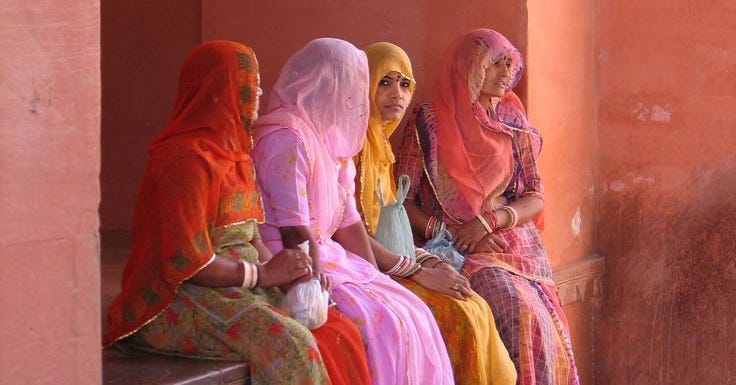Symbol, State, and Subjugation: The Case of 'Operation Sindoor'
Gender as a Weapon: Power Plays

On a random afternoon on the 22nd of April, 2025, five armed militants entered the tourist spot of Pahalgam, Kashmir, going around questioning the religion of each pilgrim, and shooting non-Muslims on the spot. The attackers exclusively targeted Hindu men, intentionally deserting their wives, kids, and other female relatives to make a point. “I won’t kill you. Go and tell Modi,” they replied when one particular family distressingly asked to be murdered as well.
This is the grassroots of what you might call ‘weaponised gender.’ Of course, they are terrorists; violence equals cleansing in their language. But what happens when the government sees this as an opportunity to win the hearts of its millions of patriots for whom it is a women’s honor that is of utmost value, that needs more guarding than the common man of this country? Of course, it is not the men who were brutally killed that matters more in this situation, it is the women who were truly hurt, left for nothing but a bland, unfulfilling, widowed life.
Operation Sindoor was thus, born, at a moment when Pakistan was least expecting it. During the early hours of May 7th, India launched a massive strike on the terrorist breeding camps in Pakistan, as well as in PoJK (Pakistan-occupied Jammu Kashmir), successfully destroying nine such camps, proving its power and integrity in avenging the brutal killing of those 26 civilians.
The Repercussions of ‘Womanhood’: After the Attack

A nationwide celebration was observed in India, heralding the virtuous PM Modi and others, following the powerful act of retaliation. Two lady officers brief the press about this war. Everything looks good, looks justified.
But under this mask of feminist ideals lies fascist propaganda, a state only appearing to promote feminism. Beyond this facade of modern liberalism is an organized, state-led theatre, with each actor a puppet of these adamant objectives. It is no more, no less than a performance to spoon-feed misogynistic and tyrannical dogmas, for the betterment of no one else but those already neck-deep in dominion and funds.
The reasonable counterattack could have been named many other things without subjugating the idea of female independence. But the name Operation Sindoor indicates the blatant objectification of the women deliberately left unharmed during the attack.
In pushing women to be unveiled faces of the secret, violent comeback by India, not only has a justification of the patriarchal militarism been attempted by the government, but a new form of feminism, both state-sponsored and pseudo-idealist, has been born.
The Religious Significance of ‘Sindoor’ in India

Sindoor refers to a streak of vermilion vertically across an Indian woman’s hairline, often believed to promise a lengthy life for her husband. It carries intense spiritual and religious significance, and is deeply rooted in Indian culture.
Now we can clearly see that it was a calculated, intentional move, one that would lead to fewer provocations by modern liberal feminists, fewer questions by independent media journalists, fewer suspicions raised by the common citizen. Operation Sindoor was not just an act of preserving dignity, but also a process of reducing women to their marital status, promoting the ancient idea of a submissive, dependent wife.
Truly, are those women nothing more than widows now? If we care so much about the vermilion, a color on their foreheads, who is supposed to care for those who were shot dead on the spot?
Some might argue it is their grief symbolized through Operation Sindoor. This brings to us another revelation.
Is that grief an affliction caused by the loss of a “husband”, or the loss of a family one had hoped to spend their entire lives with? Specifically, is a woman’s grief stored solely on a streak of red smeared on her forehead?
The answer remains the same, and brings us to more important questions.
The Concept of ‘Veils’: A Political Strategy

In India, women are typically supposed to put a veil over their heads to cover their faces. Most government officials seem to have taken this to heart, so much so that they have started wearing an invisible veil themselves.
Does the inclusion of women in warfare make it less tormenting for those killed or injured because of it? Or does it make the given situation more justified, because surely women are more sensible to fight for the right causes than the average man? I mean, sending two women, mind you, one Muslim woman alongside a Hindu woman as an act to seem inclusive, to bring “justice” to her Indian sisters already seems like a far-fetched dream in a deeply misogynistic, traditionally religiocentric system.
This feminization of violence seems new but enduring, a surprising attempt at exploiting feminism for nationalist goals, while also reducing those who question the bloodshed as anti-nationals. Moreover, it is an exploitation of liberal ideologies, encouraging nationwide pride and discouraging conflicting perspectives.
A veil, supposedly to protect the women from lustful male gazes and the aftereffects of simply being a woman, once again becomes a tool to finally, veil the ugliness of warfare through the very women whom it sought to protect from such gore.
Yet, the power of unveiling still remains with man, while the obligation of veiling is still given to woman, like a validation of her moral compass.
The Unveiling: Beyond the Sindoor

Over time, every society builds, breaks, and repeats. That is a matter of fact. But that does not take away from our responsibilities as aware citizens.
Operation Sindoor is just one example that reveals how gender politics have gone beyond mere differences, being not just protected but also policed. It is framed as a cultural emblem moved by personal propaganda, encouraging collective participation. When the state starts using its marginalized communities as barely a tool to justify authority and bloodbaths, it stops being a form of empowerment and becomes a weapon instead.
If real progress is the goal, we must start recognizing the gaps between true liberation and calculated exploitation. We must first unlearn our prejudices and learn to see everyone equally; only then will we be able to discern between promoted ideologies and genuine sincerity.
To challenge existing narratives, we must ask ourselves: Who truly benefits when gender is framed as a battleground? And more importantly, what does an honest participation look like when separated from state agendas?
Until these questions are at the centre of our discourse, the weaponization of gender will remain not just a tactic, but an ongoing pattern.
We must keep wondering: Who really lies behind the veil?




Comments
Post a Comment